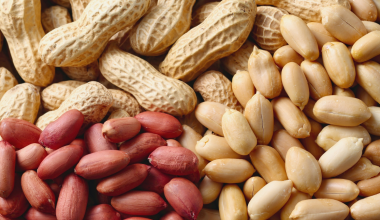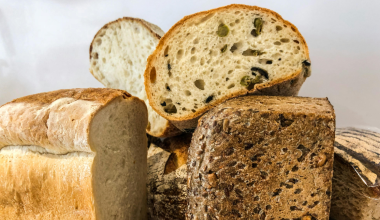Pain is the body’s signal that something isn’t right. Chronic pain, often invisible to others, is a deeply personal experience, and no two individuals feel it in the same way. It can impact daily life and affect our ability to function at work and home, participate in social activities, and lead to social isolation and frustration. Creating a personalized treatment plan is integral for effectively managing pain every day.
Health Canada states pain is “an unpleasant sensory and emotional experience associated with, or resembling that associated with, actual or potential tissue damage.”
The Canadian Pain Task Force was created in 2019 to assess how to improve chronic pain management. The recommendation was to use a more integrative approach to pain management that involves multidisciplinary teams and includes both medication and other treatment options. This comprehensive approach allows care providers to create therapy plans suited to the individual.
Understanding Pain Management
Pain can be debilitating and affect our daily lives.
Acute pain lasts less than three months. This type of pain subsides as time passes and the body heals. Cuts, headaches, broken bones, and childbirth are all examples of acute pain.
Chronic pain lasts longer than three months and there are 2 types. Chronic primary pain has no apparent cause, for example lower back pain and fibromyalgia. Chronic secondary pain happens as a symptom of another disease, such as cancer, nerve damage, or muscle disease, and can become the illness in its own right.
Watch as Health Insider expert Dr. Brian Kleinberg gives his top 3 tips to alleviate back pain==>>

Treatment to manage pain depends on the type of pain and individual tolerance. Conventional treatments of pain management approaches include:

- Over-the-counter or prescribed analgesics are widely used to manage chronic pain. These can include NSAIDS, acetaminophen, corticosteroids, muscle relaxers and opioids. Doctors try to avoid prescribing opioids due to their addictive quality and try to only prescribe them after surgery, as an analgesic for cancer pain, or at end-of-life.
- Physical or occupational therapy helps you move your body in a manner that minimizes pain. Physical therapy focuses on a specific treatment for the area experiencing pain. Occupational therapy helps to improve your ability to do daily tasks by modifying your movement or providing tools to diminish pain.
- Isolation from the stress of chronic pain can lead to depression. Your doctor may prescribe anti-depressants or suggest cognitive behaviour therapy to give you the tools to mentally and emotionally cope with your pain.
- Certain medical procedures such as soft tissue or nerve stimulation or may also help with chronic pain. In some cases, surgery may even be required to help decrease the amount of pain a patient experiences.
However, there has been a move toward a more integrative approach to managing and living with chronic pain that is seeing positive results.
The Canadian Pain Task Force report highlights the need for a collaborative approach to improve the understanding, prevention, and management of chronic pain, focusing on enhancing care quality, accessibility, and patient results.
What is Holistic Pain Management?
Holistic pain management involves non- traditional treatment to help with the healing process. This approach considers the whole person, body, mind, and spirit, rather than focusing solely on the symptoms. Practitioners of alternative therapies require extensive training in their field. While some practitioners hold medical degrees, it is not a requirement to deliver this type of treatment.
Studies show integrating alternative therapies helps decrease the amount of chronic pain patients experience.
Some of the most common alternative therapies include:

- Acupuncture: This form of Chinese medicine has been used to treat pain for over 3000 years. The therapy involves inserting thin needles into specific points on your body to reduce pain. It can treat lower back pain, tennis elbow, labour pains. You may experience some minor bleeding, bruising, and tenderness around the treated area. If you suspect you are pregnant or have a pacemaker, be sure to let the practitioner know before treatment.
- Chiropractic Care: Chiropractic adjustment can complement conventional treatment. These adjustments involve manipulation of joints to help reduce musculoskeletal pain and discomfort, promoting proper movement and function. Chiropractic is the most used of all alternative treatments and can help in alleviating pain caused by arthritis, headaches, injury from accidents, and sciatica.
- Massage Therapy: Massage therapy as treatment for pain relief, relaxation, and improving circulation is widely used. Massage is the manual manipulation of soft tissue. Although many see this a therapy as part of conventional medicine, it is an alternative therapy. Therapists create treatments plans based on the individual and can target areas of discomfort. Massage can help reduce muscle tension, ease muscle pain, and help speed the healing of injuries.
- Osteopathic manipulative treatment (OMT): This hands-on therapy treats mechanical pain (joint, muscle, and tendon pain). OMT differs from chiropractic care in that it focuses more on soft tissue manipulations, stretching, and massage to improve mobility. The treatment is gentle and ensures that muscles and bones are aligned and balanced. OMT can be used for arthritis, headaches, and stress injuries.
- Herbal and Nutritional Supplements: Popular supplements and herbs can also aid in pain management, such as turmeric, ginger, and CBD oil. When using any supplement as part of complementary therapy, be sure to let your doctor know as some of these can react with prescribed medications.
- Yoga – The practice of yoga can help in decreasing pain. Besides the gentle movements and body awareness, yoga uses mindfulness to calm your thoughts and makes you forget the pain. Studies have indicated that through the practice of yoga, the perception of pain diminishes.
Integrating Alternative Therapies with Conventional Treatments
Alternative therapies can complement conventional treatments, providing enhanced relief and reducing reliance on medications. Incorporating alternative therapies with traditional treatments has seen positive effects.
If you are considering alternative therapy, discussing this with your primary care physician and specialists is important to ensure coordinated care.
Complementary treatments are not covered by healthcare. You may have coverage under a private benefit plan. Cost can range from $70 for a half hour massage treatment to $250 for an hour initial visit to see a naturopathic doctor
Virtual Reality for Pain Management
Medical professionals continue to explore avenues to help with pain management. The technology behind virtual reality (VR) is proving beneficial in health care, particularly in pain management. Using a headset, VR creates an environment that feels real and can be used as a complementary tool in learning how to navigate through pain and injury.
No one wants to live with pain. Fortunately, medical professionals are seeing the benefit of incorporating alternative medicine into patient treatment plans. Blending alternative and conventional care can transform your experience with chronic pain. It emphasizes the importance of personalized treatment and collaboration with healthcare providers to create a more effective pain management strategy tailored to individual needs.
If you are experiencing chronic pain and want more information, speak to your doctor about including these complementary treatments in your pain management plan.
Health Canada also provides a list of resources for pain management here.
Power Over Pain is a free virtual resource that provides access to courses, workshops, peer support, and one-on-one counselling to feel empowered in your pain management journey. You can access the site through their portal.
~Read more from The Health Insider~
- The Mood Menu: How Your Plate Shapes Your MindDiscover how simple food choices like turkey and yogurt can boost your serotonin and stabilize your mood.
- There’s a Reason Your Voice May Not Be As Clear as it Can BeFrom dry winters to loud parties, your voice takes a beating. Learn how to protect your “vocal instrument” with these expert tips and SAC guidelines.
- Guilt-Free Indulgence for the Holidays. This is How it’s Done.Enjoy every plate this season! Prep your gut with our low-effort tips: boost hydration, sip digestive tea, and avoid the post-feast crash.
- In-Flight & Holiday Comfort: Essential Gear for Stress-Free TravelFrom travel pillows to compression socks, here are the smartest comfort tools to stay rested and stress-free on flights and holiday visits.
- Struggling With the Time Change? Here’s How to Get Back on TrackLosing or gaining an hour can mess with your energy, mood, and sleep. Here’s how to help your body adjust naturally to the time change.
- Vitamin C and Collagen: The Duo Behind Healthy Skin, Strong Joints, and Faster HealingDiscover how vitamin C fuels collagen production to support healthy skin, strong joints, and tissue repair.
The information provided on TheHealthInsider.ca is for educational purposes only and does not substitute for professional medical advice. TheHealthInsider.ca advises consulting a medical professional or healthcare provider when seeking medical advice, diagnoses, or treatment. To read about our editorial review process click here.
















